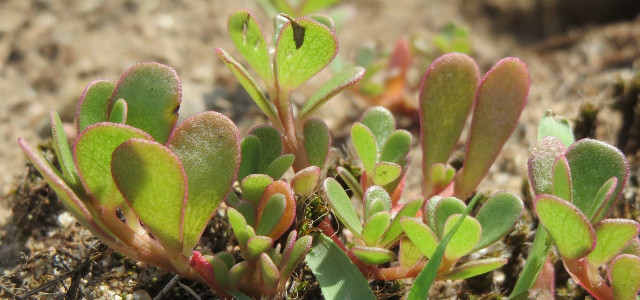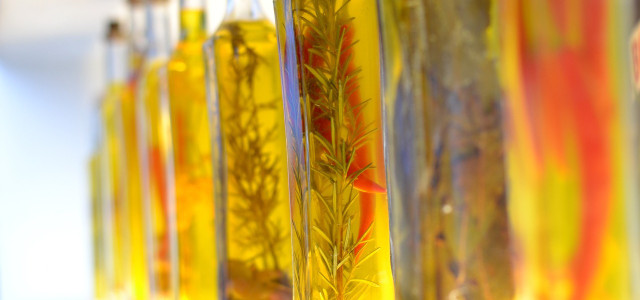Is purslane edible or is it just an annoying weed? The surprising benefits of this common garden plant may inspire you to incorporate it into your diet.
Is purslane edible? Purslane, or Portulaca oleracea, is a fast-growing annual known for its succulent leaves. It goes by a few names, including pigweed, fatweed or little hogweed, and is grown and harvested worldwide. While purslane generally thrives in warmer climates, it also grows in every US state. Nationwide, it’s commonly viewed as a weed, and people rush to remove it from their lawns.
So, is it edible? Before you reach for your natural weed killer, learn more about this humble plant.
Is Purslane Edible?
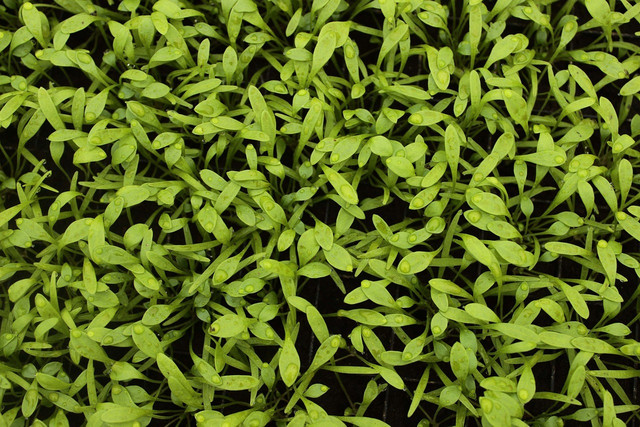
Much like dandelion or nettle, purslane is a common edible weed. If you find it growing in your yard, consider yourself lucky — you’ve got a free supply of an incredibly nutritious leafy green. Everything from the leaves to the stems and flowers is edible, and it can be enjoyed raw, cooked or even dried and ground into a health food supplement ideal for smoothies.
It has a crunchy texture and features a mild lemony flavor, and it’s commonly used as a substitute for spinach, watercress or arugula. This leafy green is low in calories and carbohydrates and contains no cholesterol.
Nutritional Benefits of Purslane
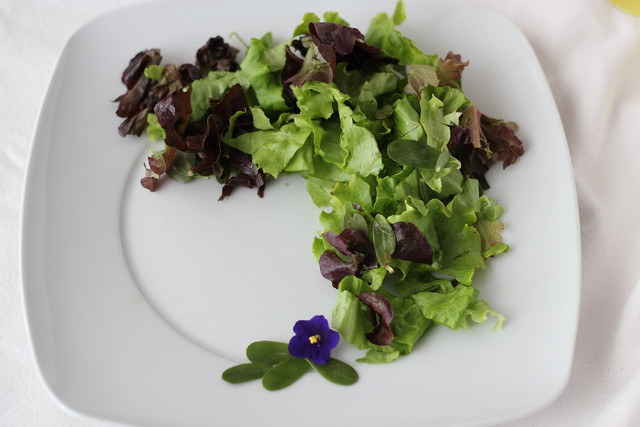


Purslane is edible and is bursting with nutritional benefits, making it a surprising superfood. It has the highest levels of vitamin A found in any leafy green, which is a natural antioxidant that works to boost your immune system. It’s also the richest green plant source of omega-3 fatty acids, ideal for those avoiding the cholesterol of fish oils or following a vegan diet.
Purslane also contains vitamin C and B-complex vitamins and dietary minerals such as potassium, magnesium, calcium, iron, phosphorus and copper. Due to this, these little nutrient bombs are thought to help with heavy menstruation, diabetes and weight loss.
Note: Purslane is a succulent, meaning it’s higher in sodium than other vegetables and not suitable for a low-sodium diet. It’s also rich in oxalates which can induce kidney stones and decrease calcium absorption in the body. If you have any concerns about eating purslane, speak to a healthcare professional.
Harvesting and Foraging Tips



If you’re wondering where purslane grows, you shouldn’t have to look too far. It loves open sunny areas like yards, gardens, roadsides, and even the cracks between sidewalks. One common lookalike, Euphorbia, is poisonous and shouldn’t be consumed. It’s important to identify purslane properly before eating.
How to Identify Purslane:
- Purslane often covers a large area growing in dense mats up to 20 inches across.
- The stems are thick, succulent and have a slight reddish hue.
- The green leaves, also succulent, often have a bit of a shine.
- The flowers are small and yellow with four to six notched petals.
Once you’ve correctly identified purslane, you can start to harvest it. It’s best gathered when young and growing close to the ground. Once picked, wash thoroughly in a sink filled with water to remove dirt or insects. Pat the leaves or spin them dry.
Tip: Purslane can last three to four days before wilting if wrapped in a paper towel — or better yet, sustainable paper towel alternative — and stored in the fridge.
Tasty Ways to Enjoy Purslane
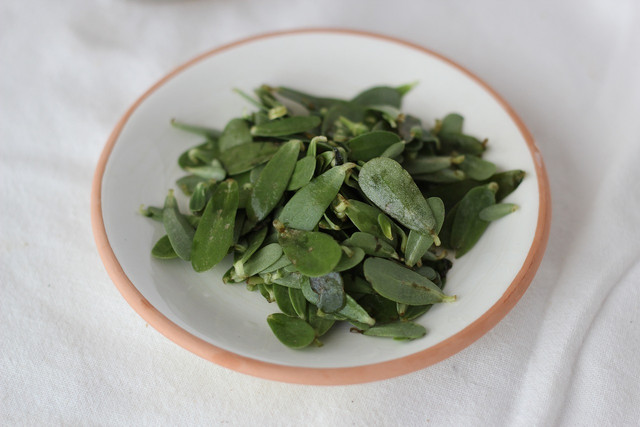


Now that we’ve established purslane is edible, you might be wondering about the best ways to eat the leafy green. Fortunately, there are no wrong answers here. Purslane is delicious whether it’s added to a (vegan) sandwich, incorporated into a healthy spring salad, sautéed with spinach for a tasty side dish, pickled for later use or as a garnish on a tasty Tuscan white bean and kale soup.
Is Purslane Edible? It Sure Is in This Zesty Purslane Salad Recipe
This leafy green tastes best when fresh, as the flavor profile really comes through. Combine it with the peppery taste of arugula and a zingy vinaigrette for a delightful summer salad. Here’s what you’ll need.
Salad:
- 4 cups purslane, washed
- 2 cups arugula, washed
Vinaigrette:
- ¼ cup extra-virgin olive oil
- 1 tbsp red wine vinegar
- 2 tbsp Dijon mustard
- 1 clove garlic, minced
Toppings:
- ¾ cup chopped roasted beets
- ⅓ cup crumbled goat cheese or vegan feta
- A handful of toasted almonds
Instructions:
- Coarsely chop the arugula and add it to a large salad bowl along with the purslane.
- In a small bowl, mix together the olive oil, red wine vinegar, mustard, and garlic.
- Drizzle the vinaigrette on top of the salad and toss to combine.
- Add the beets, cheese and almonds, and give a final toss before serving.
Read more:
- Chickweed: How to Use this Edible Wild Herb
- Edible or Poisonous? 9 Fascinating Types of Lawn Mushrooms
- Zero-Waste Lifestyle 101: How to Lead A No-Waste Life
Do you like this post?






